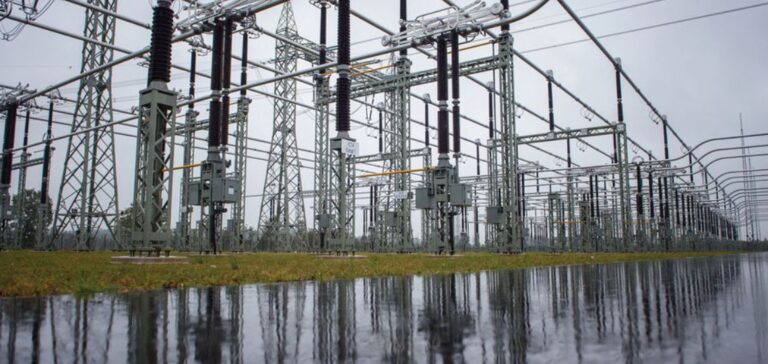On Monday, Germany officially launched construction of the first section of a high-voltage power line to link the wind-rich north with the industrial south, a crucial project if the country is to make a success of its energy shift.
Germany Connects Wind North to Industrial South: Crucial Project for German Electricity
The “SuedLink” “electricity superhighway” will mean that “southern Germany will in future be able to benefit from the large quantities of wind power generated in the north”, commented Federal Minister of Economics and Climate Protection Robert Habeck, quoted in a press release.
The 700-kilometer link should have entered service last year, when it was first announced almost ten years ago.
The aim is now to complete the line by 2028. This expansion of the power grid is intended to guarantee “a secure power supply in Bavaria and Baden-Württemberg”, two wealthy regions in the south, by means of two connections from municipalities in the northern state of Schleswig-Holstein, which produces far more wind power than it consumes. T
ith major companies such as BMW and Mercedes, as well as a large number of small and medium-sized businesses, southern Germany needs energy to meet the needs of the industrial sector.
Germany closed its last nuclear reactor this year, with the aim of meeting 80% of its electricity needs with renewable energies by 2030, while closing its coal-fired power plants by 2038 at the latest.
Germany: SuedLink to Connect 10 Million Homes with 4 Gigawatts
The line from Schleswig-Holstein will be common over most of its route, and will use underground cables rather than high-voltage overhead lines, which often meet with local resistance.
The first section of the line is proving tricky, as the cable will have to pass under the River Elbe, necessitating the excavation of a tunnel some 5.2 kilometers long and with an internal diameter of around 4 meters.
SuedLink will cost 10 billion euros, considerably more than expected due to the need to bury the cables.
The facility will have a total transmission capacity of 4 gigawatts, equivalent to the electricity consumption of around 10 million homes.
Another 137 km-long transmission line from the North Sea coast in Schleswig-Holstein to the Danish border is nearing completion of its fifth and final section. Denmark’s wind turbines will thus supply the German and even the European electricity grid, with a connection scheduled for 2024 on the Danish side.
Why does it matter?
Germany is making progress in its energy turnaround, linking the wind-powered north with the industrial south thanks to the electricity highway. This will strengthen its ability to use more renewable energy and meet growing demand, while reducing its dependence on fossil fuels.






















